
Esther Eidinow
Address: Department of Classics and Ancient History
University of Bristol
11 Woodland Road
Bristol
BS8 1TB
University of Bristol
11 Woodland Road
Bristol
BS8 1TB
less
Related Authors
Rabun Taylor
The University of Texas at Austin
Theodora Jim
University of Nottingham
Nicolette Pavlides
University of Edinburgh
Ben Cassell
King's College London
Gyula Lindner
University of Pécs
Yulia Ustinova
Ben Gurion University of the Negev
Laura Feldt
University of Southern Denmark
K.A. Rask
The Ohio State University
Nektarios Yioutsos
University of Ioannina/Greece
InterestsView All (28)
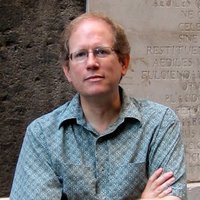
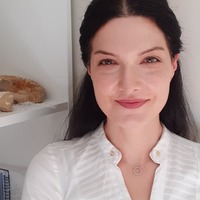
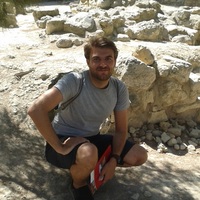
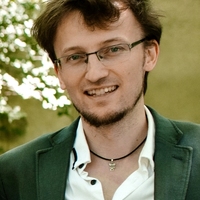
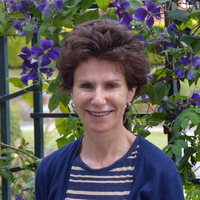

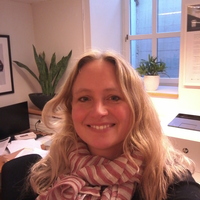
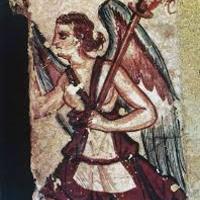
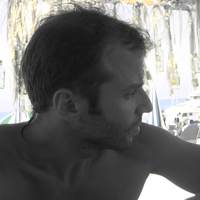
Uploads
Papers by Esther Eidinow
In T. Scheer, ed. Natur-Mythos-Religion im antiken Griechenland. Nature-Myth-Religion in Ancient Greece, 113-132. Stuttgart: Franz Steiner Verlag, 2019.
The VR experience can be downloaded for use as videos, through a 'magic window', on a google cardboard (using Google Android Smartphones), or the Meta Quest / Quest 2 virtual reality headsets. The VRO is accompanied by teaching resources (see our website) have been designed to complement and extend the OCR A-Level Classical Civilisation syllabus, and it has a number of links to the OCR A-level curriculum.
The project aims to enhance historical understanding of ancient Greek oracle consultation and the oracle of Dodona. It is also exploring the role of VR in classrooms, museums and cultural settings; and bringing a richer understanding of sensory processing and brain activity in users of VR.
The Virtual Reality Oracle project is led by Esther Eidinow, and is a collaboration between academics at the University of Bristol, the University of Bath, and King’s College London. The VR was created in collaboration with Friday Sundae Studios. The project is funded by the UK Arts and Humanities Research Council. For more information, visit our website at www.vroracle.co.uk.
Accepted manuscript of paper published in Pilgrimage and Economy in the Ancient Mediterranean, edited by Anna Collar and Troels Myrup Kristensen, 187-203. Leiden: Brill, 2020.
See https://www.degruyter.com/viewbooktoc/product/498381
Magic, Ritual and Witchcraft, Special Volume, Issue 1: Narratives of Witchcraft: Agency, Discourse, and Power edited by Esther Eidinow and Richard Gordon
This essay uses theories from relational sociology, especially Eiko Ikegami’s work on ‘publics’, to investigate the development of the cult of Sarapis and its destruction. It explores these events as a series of interactions in which contestations of identities took place. It considers the mental states of the historical actors and the ideologies they held, as well as the social networks in which they interacted, and their larger context. This essay begins by considering the formation of identities positively, with the development of aesthetic cultural circles (‘Creation’). But in the second part (‘Destruction’) it adds the theories of Randall Collins and Eddie Hartmann to investigate how violence emerged from the complex emotional interactions of social groups, and the ways in which that violence may be linked with the attempt to create and/or maintain symbolic boundaries between perceived groups.
(Please cite the published version; email me and I'll send it.)
We offer two case-studies, one an ancient account of deliberation and decision making, the other from a modern newspaper article, to illustrate our argument that the aesthetic is an essential element in various stages of the process of decision making, from determining what needs to be decided, through identifying the basis for decision making, to the act of decision making itself. In that context, we highlight the role of the aesthetic in the framing of future possibilities in the process of scenario planning.
In conclusion, we propose that focusing on the aesthetics of story-telling as a technology to create and share plausibility is a useful way to analyse scenario stories in scenario-planning work; we hope that it may be a useful concept with which to develop further research in this area.
In T. Scheer, ed. Natur-Mythos-Religion im antiken Griechenland. Nature-Myth-Religion in Ancient Greece, 113-132. Stuttgart: Franz Steiner Verlag, 2019.
The VR experience can be downloaded for use as videos, through a 'magic window', on a google cardboard (using Google Android Smartphones), or the Meta Quest / Quest 2 virtual reality headsets. The VRO is accompanied by teaching resources (see our website) have been designed to complement and extend the OCR A-Level Classical Civilisation syllabus, and it has a number of links to the OCR A-level curriculum.
The project aims to enhance historical understanding of ancient Greek oracle consultation and the oracle of Dodona. It is also exploring the role of VR in classrooms, museums and cultural settings; and bringing a richer understanding of sensory processing and brain activity in users of VR.
The Virtual Reality Oracle project is led by Esther Eidinow, and is a collaboration between academics at the University of Bristol, the University of Bath, and King’s College London. The VR was created in collaboration with Friday Sundae Studios. The project is funded by the UK Arts and Humanities Research Council. For more information, visit our website at www.vroracle.co.uk.
Accepted manuscript of paper published in Pilgrimage and Economy in the Ancient Mediterranean, edited by Anna Collar and Troels Myrup Kristensen, 187-203. Leiden: Brill, 2020.
See https://www.degruyter.com/viewbooktoc/product/498381
Magic, Ritual and Witchcraft, Special Volume, Issue 1: Narratives of Witchcraft: Agency, Discourse, and Power edited by Esther Eidinow and Richard Gordon
This essay uses theories from relational sociology, especially Eiko Ikegami’s work on ‘publics’, to investigate the development of the cult of Sarapis and its destruction. It explores these events as a series of interactions in which contestations of identities took place. It considers the mental states of the historical actors and the ideologies they held, as well as the social networks in which they interacted, and their larger context. This essay begins by considering the formation of identities positively, with the development of aesthetic cultural circles (‘Creation’). But in the second part (‘Destruction’) it adds the theories of Randall Collins and Eddie Hartmann to investigate how violence emerged from the complex emotional interactions of social groups, and the ways in which that violence may be linked with the attempt to create and/or maintain symbolic boundaries between perceived groups.
(Please cite the published version; email me and I'll send it.)
We offer two case-studies, one an ancient account of deliberation and decision making, the other from a modern newspaper article, to illustrate our argument that the aesthetic is an essential element in various stages of the process of decision making, from determining what needs to be decided, through identifying the basis for decision making, to the act of decision making itself. In that context, we highlight the role of the aesthetic in the framing of future possibilities in the process of scenario planning.
In conclusion, we propose that focusing on the aesthetics of story-telling as a technology to create and share plausibility is a useful way to analyse scenario stories in scenario-planning work; we hope that it may be a useful concept with which to develop further research in this area.
https://global.oup.com/academic/product/ancient-divination-and-experience-9780198844549?cc=gb&lang=en&#
This volume sets out to re-examine what ancient people - primarily those in ancient Greek and Roman communities, but also Mesopotamian and Chinese cultures - thought they were doing through divination, and what this can tell us about the religions and cultures in which divination was practised. The chapters, authored by a range of established experts and upcoming early-career scholars, engage with four shared questions: What kinds of gods do ancient forms of divination presuppose? What beliefs, anxieties, and hopes did divination seek to address? What were the limits of human 'control' of divination? What kinds of human-divine relationships did divination create/sustain? The volume as a whole seeks to move beyond functionalist approaches to divination in order to identify and elucidate previously understudied aspects of ancient divinatory experience and practice. Special attention is paid to the experiences of non-elites, the perception of divine presence, the ways in which divinatory techniques could surprise their users by yielding unexpected or unwanted results, the difficulties of interpretation with which divinatory experts were thought to contend, and the possibility that divination could not just ease, but also exacerbate, anxiety in practitioners and consultants.
Further information at: https://global.oup.com/academic/product/ancient-divination-and-experience-9780198844549?cc=gb&lang=en&#
At the heart of this volume are three trials held in Athens in the fourth century BCE. The defendants were all women and in each case the charges involved a combination of ritual activities. Two were condemned to death. Because of the brevity of the ancient sources, and their lack of agreement, the precise charges are unclear, and the reasons for taking these women to court remain mysterious. Envy, Poison, and Death explores the changing factors - social, ideological, and psychological - that may have provoked these events. It focuses in particular on the role of envy (phthonos) and gossip as processes by which communities identified people and activities that were dangerous, and examines how and why those local, even individual, dynamics may have come to shape official civic decisions during a time of perceived hardship. Finally, it explores the idea of social trauma to explain how individual concerns might be transformed into group and/or civic action.
This material was originally published in Envy, Poison, and Death: Women on Trial in Classical Athens by Esther Eidinow, and has been reproduced by permission of Oxford University Press [http://ukcatalogue.oup.com/]. For permission to reuse this material, please visit http://www.oup.co.uk/academic/rights/permissions.
The texts in this chapter are concerned with hindering or encouraging the appetites of both genders for intimate relationships. Of the eight curses discussed here, at least two are certainly written by women. This chapter identifies the nature of the risks that individuals were seeking to control through the use of these texts. It offers a full consideration of the different situations that could have prompted the creation of these curse texts, without any particular expectations of likely relationship models. These texts can be read as comprising the personalized appeals of individuals trying to exert some influence over situations they found precarious and threatening. They provide an interesting nuance to the male representations of women’s sexuality and relationships that dominate other media. They reveal the details of stories in which desire is not a straightforwardly institutionalized exchange, and where women not only fear the power of others, but also seem to wield power themselves.
This material was originally published in Oracles, Curses, and Risk among the Ancient Greeks by Esther Eidinow, and has been reproduced by permission of Oxford University Press [http://ukcatalogue.oup.com/]. For permission to reuse this material, please visit http://www.oup.co.uk/academic/rights/permissions.
It will use new cognitive methodologies, treating cognition as embodied and distributed, with the view that humans are embodied agents, as well as mental creatures, who are integrated in society. By bringing cognitive and ancient disciplines together, this project aims both to enhance approaches to key historical evidence and research methodologies, and also to expand understanding of cognition as consisting of individuals in full interaction with culture.
This conference seeks papers that examine how the experience of time becomes gendered in the ancient Greco-Roman Mediterranean. Papers may address the diverse ways in which men and women themselves articulated these ideas, or how gender was employed in their communication about time. A range of disciplinary and theoretical perspectives, and themes for consideration that pertain to the gendering of time may include, but are not limited to, evidence for daily domestic activities; ritual and rites of passage; interpretations of myth and cult; conceptions of cosmology and processes of nature; material and visual culture; the role and purpose of repetition; bodily practices.
Engendering Time in the Ancient Mediterranean takes place at Bates College on April 29 – May 1 2016, organized by Esther Eidinow and Lisa Maurizio. A generous grant from the Costas and Mary Maliotis Charitable Fund Foundation supports this conference.
Place: G22/26, Institute of Classical Studies, Senate House, London, UK
This conference explores divination in antiquity. The papers will re-examine what ancient people thought they were doing through divination, to see what this can tell us about the religions and cultures in which divination was practiced. The papers will cover Greek, Roman, Mesopotamian, Egyptian and Chinese divination, and the themes will include the beliefs, anxieties and hopes that divination was used to address; the limits of human control of divinatory practise and outcomes; perceptions of the nature of the gods addressed through divination; and the human-divine relationships that divination created and/or sustained.
For further information and to register (spaces are limited), please visit the conference website: https://webdisk.ucalgary.ca/~ldriedig/public_html/Divination/Home.html
Recent post-humanist theories have resulted in a surge of interest on the body as a cultural conception. Moreover, through recent explorations of embodiment, the body, as Csordas (1993, 135) writes, has emerged as “the existential ground of culture”. However, very little attention has been paid to the issue of body as a composite feature, and to debates surrounding corporeal knowledge and relational dynamics. Can the body be construed as one entity or is it really an assemblage of its constituent parts? If the latter, how does the body relate to them? Who determines and controls knowledge about bodies, body parts, and their relational dynamics?
The project engages with these questions and argues for a greater fluidity in both the signification processes and the signifying agents (patients, bodies, body parts, dead bodies, medical scientists, nurses, religious professionals and entrepreneurs, medical insurance policies, medical technology, biopolitics, etc.) that create focus and subsequently define physical and imagined frontiers in the human body. The project acknowledges the recursive nature and the diachronicity of body-related debates and lays emphasis on fragmentation, a process crucial to our exercise. Moreover, it examines the social and temporal presences of the body in its interactions with socio-economic status, gender and age; the sensual presence of the body in questions of conceptions of pain and pleasure, as well as the forces that are understood to bring these to bear. It comprises three exploratory workshops, each on a distinct but interrelated theme, aimed primarily at fostering blue-sky thinking and encouraging close collaborations between experts from the fields of Humanities, Disability Studies, Health and Social sciences.
The event is generously sponsored by the Wellcome Trust.
Recent post-humanist theories have resulted in a surge of interest on the body as a cultural conception. Moreover, through recent explorations of embodiment, the body, as Csordas (1993, 135) writes, has emerged as “the existential ground of culture”. However, very little attention has been paid to the issue of body as a composite feature, and to debates surrounding corporeal knowledge and relational dynamics. Can the body be construed as one entity or is it really an assemblage of its constituent parts? If the latter, how does the body relate to them? Who determines and controls knowledge about bodies, body parts, and their relational dynamics?
The project engages with these questions and argues for a greater fluidity in both the signification processes and the signifying agents (patients, bodies, body parts, dead bodies, medical scientists, nurses, religious professionals and entrepreneurs, medical insurance policies, medical technology, biopolitics, etc.) that create focus and subsequently define physical and imagined frontiers in the human body. The project acknowledges the recursive nature and the diachronicity of body-related debates and lays emphasis on fragmentation, a process crucial to our exercise. Moreover, it examines the social and temporal presences of the body in its interactions with socio-economic status, gender and age; the sensual presence of the body in questions of conceptions of pain and pleasure, as well as the forces that are understood to bring these to bear. It comprises three exploratory workshops, each on a distinct but interrelated theme, aimed primarily at fostering blue-sky thinking and encouraging close collaborations between experts from the fields of Humanities, Disability Studies, Health and Social sciences.
The event is generously sponsored by the Wellcome Trust
Fate, Luck and Fortune: Popular Narratives of Environmental Risk, Friday September 8th, 10-5.30pm.
Speakers at this workshop include: Nick Alfrey (Nottingham University), Claire Craig (Royal Society), Karen Henwood (Cardiff University), James Lyons (Exeter University), Joe Smith (Open University), David Thorpe (author and journalist), and Jonathan Wolff (Oxford University).
To find out more and to register to attend the workshop:
https://goo.gl/BnPWDN
This lecture is part of the AHRC-funded network: Fate Luck and Fortune: narratives of environmental risk, led by Esther Eidinow and Georgina Endfield. To find out more and to register to attend the lecture: https://goo.gl/rjdrqF
If you do use the films for teaching, we would love to know what you think, how you used them, how students reacted, etc.
The films are a prototype for a VR project: http://www.vroracle.co.uk/
https://www.history.org.uk/secondary/module/8658/podcast-series-associated-scheme-of-work-an-int
The materials comprise podcasts about a number of ancient Greek rituals, as well as a scheme of work for KS3. The materials have been tested by students and teachers at KS3 and above, and are now distributed via the website of the Historical Association (HA).
The podcasts were developed by Hugh Bowden (King’s College, London), Felix Budelmann (University of Oxford), Esther Eidinow (University of Bristol), Olympia Panagiotidou (University of Thessaloniki), Robert Parker (University of Oxford), and Yulia Ustinova (Ben Gurion University, Israel), all participants in the AHRC-funded research network ‘Cognitive Approaches to Ancient Religious Experience’; they were narrated and produced by Simon Brown (HA).